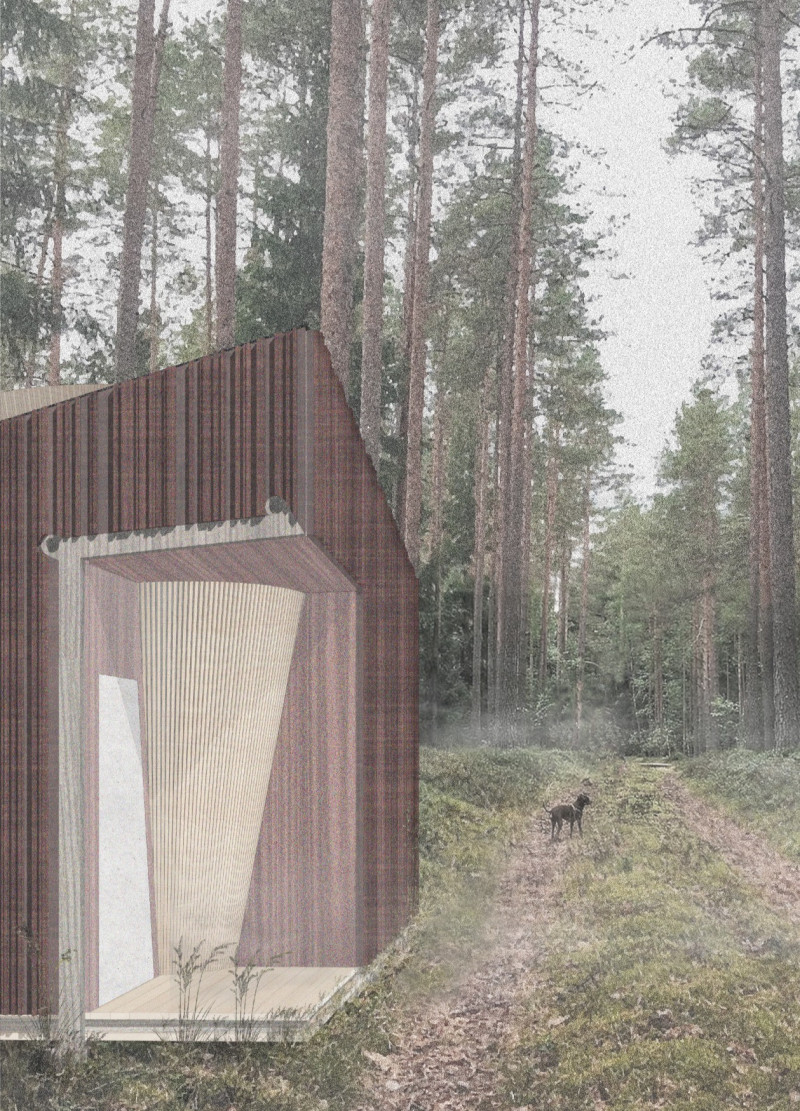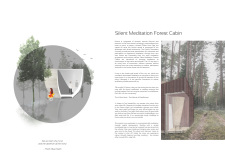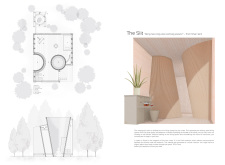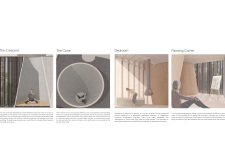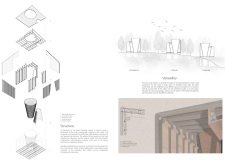5 key facts about this project
The cabin is designed with a focus on spatial fluidity, offering distinct areas for meditation, living, and creative expression. Central to the concept are two significant structural components: the Crescent, which provides a broad view of the natural surroundings, and the Inverted Cone, an intimate space that encourages deep meditation. The interplay of these forms promotes a variety of experiences for occupants, all while ensuring that nature remains an integral part of the daily routine.
Unique Design Approaches Focused on Mindfulness
The Silent Meditation Forest Cabin distinguishes itself from typical structures through its dedicated focus on mindfulness principles as the foundation of its design. Its layout facilitates a smooth transition from the external environment to internal spaces that foster concentration and introspection. Each area within the cabin is purposefully designed to cater to specific activities, such as meditation, cooking, or painting, ensuring that daily practices support the overall intention of the space.
Materials selected for construction support both functional and aesthetic considerations. Wood serves as the primary material, establishing warmth and a connection to the forest, while reinforced concrete is used thoughtfully in structural aspects such as meditation cones. Large glass openings create a visual link to the environment, allowing natural light to permeate the interior while emphasizing transparency between indoor and outdoor settings.
Adaptability and Structural Integrity
The project demonstrates adaptability through its structural system, which can be adjusted based on terrain variations such as woodland, hillside, or lakeside locations. This flexibility ensures that the cabin can be seamlessly integrated into diverse landscapes, allowing users to benefit from unique views and experiences. A waffle slab foundation provides the necessary performance to support this adaptability, ensuring the cabin's stability and durability.
The Silent Meditation Forest Cabin serves as an architectural manifestation of mindfulness, blending functional design with an intentional connection to nature. The careful consideration of materials and structural elements creates a space that encourages self-exploration and reflection.
To learn more about the architectural plans, sections, and design ideas behind the Silent Meditation Forest Cabin, readers are encouraged to explore the project presentation for further details.


